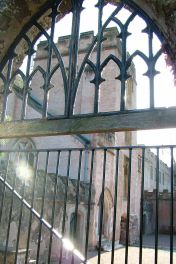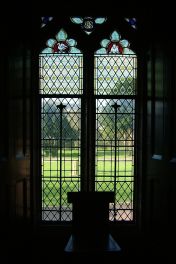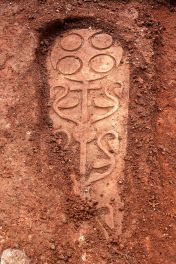Torre Abbey
Established in 1196, Torre Abbey is the English Riviera Geopark's single most important building in heritage terms, was the monastic centre for the monks that controlled much of the Bay. Constructed, in the main, of both the local limestone and sandstone along with other stone imported as a sign of wealth the Abbey, since its foundation in 1196, has witnessed, survived and even played a role in some epic moments of history. Yet through all that, the one thing that has never changed is the hospitality offered to its guests. The six Canons of the Premonstratensian order who arrived on the south coast of England from Nottingham (having been gifted the Abbey land by Lord William Brewer) began the tradition eight hundred years ago. This tradition has been maintained ever since, first by two successive centuries of Abbots and Canons and subsequently by the Cary family, who bought the property following the Dissolution of the Monasteries. Finally the local authority has taken great pride in allowing the public to enter and explore the largest surviving medieval monastery in Devon and Cornwall. 
During all that time, and in all of its roles - as an abbey, a family home, art gallery and attraction - eight centuries of history have been absorbed into the very fabric of a building which is divided into 122 rooms, rambling over 20 different levels and with 265 steps. It all contributes to a fascinating experience for the 21st century 'pilgrim', who can step inside - and back-in-time - to see what life was like as a 12th century Canon following the strict rule of St Augustine. It was an austere life, yet they were supported by servants and staff; and by the end of the 15th century, Torre Abbey had become the wealthiest Premonstratensian Abbey in England. That fortune enabled them to build Torquay's first real harbour - and to also establish a new town nearby, called "Newton Abbot". 
As well as caring for the sick and poor, it was customary for the Abbey to offer one night's free board-and-lodge to travellers (a Torquay boarding house never to show the "No Vacancies" sign! Following Henry VIII's Dissolution of the Monasteries, the surviving buildings were bought by Cary family in 1662 and became a private house. Surrounded at that time by fields, the Abbey gradually changed in appearance during the 300 years of ownership by the family, and today bears all the hallmarks of a Georgian Mansion. Again, however, the one thing which never changed was the welcome given to all visitors. Members of the Cary family were renowned for their hospitality - so much so that at one point, the Abbey became better known locally as "The George Hotel" (George being the Cary's favourite family name). The Abbey also boasts another of the English Riviera's most famous buildings, The Spanish Barn - a medieval Tithe Barn originally built to store taxes paid to the Abbey in the form of grain, hay and other farm produce. The barn's place in the history books was firmly established at the time of the Spanish Armada, when the Rosario was among the first of the Spanish fleet to come to grief. A total of 397 prisoners were captured by Sir Francis Drake and were held in the barn for a fortnight. Under the ownership of the Carys it became a stable, and later a garage for Colonel Cary's Daimler; and these days it houses temporary exhibitions...and even barn dances! Someone who dances to an altogether different tune within it, however, is the Abbey's most famous ghost! The story goes that, assured of an easy victory, many of the sailors in the Spanish Armada took their wives and girlfriends along for the voyage. A young Lieutenant and his fiancée were amongst those on board the Rosario when the vessel was captured. She quickly disguised herself as a sailor and was imprisoned in the Tithe Barn. But she died there, and "The Spanish Lady" is now said to roam the barn and the surrounding parkland...sobbing for her lost love. 
The Abbey was purchased by the local authority for £40,000, in 1930, for use as an art gallery. Part of the need for this was created when the widow of prominent Victorian sculptor Frederick Thrupp gifted much of his surviving work to the town. Actually the largest surviving collection from a Victorian sculptor's studio, his work today takes centre stage within a fine-art collection which also boasts a collection of pictures including Pre-Raphaelite works of national standing, such as Holman Hunt's "The Children's Holiday". Part-gallery, part-museum, and part-historic house Torre Abbey nevertheless found itself heading towards the new Millennium with a detailed surveyor's report which revealed that works on a frightening scale would be needed just to keep the building standing. Hence the £6-million restoration project which saw the property close in 2005. Following two major phases of restoration Torre Abbey re-opened its doors in 2014 and all are now welcome once again to step inside this precious building to experience and discover 800 years of history. For more information click here |








